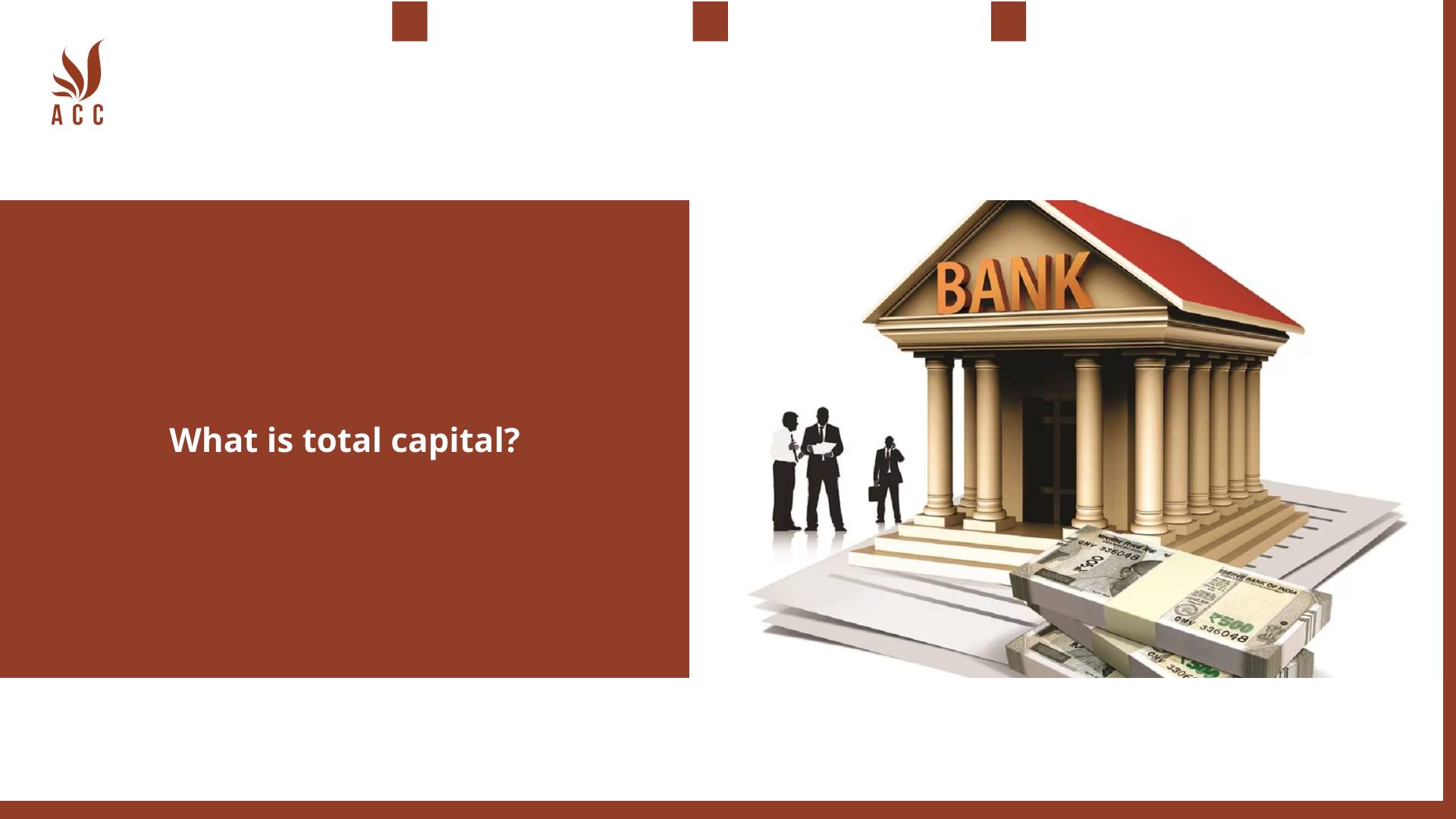
1. Demystifying Net Capital Outflow: Definition, Significance, and Implications
When it comes to understanding the intricate world of finance and investment, the concept of "total capital" plays a pivotal role. Total capital is not just another financial term; it's the bedrock upon which companies, investors, and even entire economies are built. In this article, we will delve deep into the heart of total capital, demystifying its meaning, components, and significance, all while unraveling its essential role in the financial landscape.
2. The Basics of Total Capital
Total capital, often referred to as "total invested capital" or simply "total invested assets," is a fundamental financial metric. It represents the total value of the capital employed in a business, organization, or investment portfolio. It is a crucial parameter for various financial assessments and decisions, offering a comprehensive view of an entity's financial health.
3. Components of Total Capital
Total capital comprises a combination of both equity and debt, which are further divided into various subcomponents:
Equity Capital
Equity capital includes:
Common Stock
Common stock represents ownership in a company and comes with voting rights in the decision-making process. It is a vital part of the equity portion of total capital.
Preferred Stock
Preferred stock, on the other hand, offers certain advantages over common stock, such as priority in dividend payments. Both common and preferred stock contribute to the equity capital.
Debt Capital
Debt capital encompasses:
Bonds
Bonds are debt securities issued by companies or governments. They represent borrowed money that must be repaid with interest, making them a significant part of total capital.
Loans
Loans, whether from banks, financial institutions, or other sources, are another critical component of debt capital. They are essential for capital formation and expansion.
Retained Earnings
Retained earnings are the accumulated profits of a company that have not been distributed to shareholders as dividends. These earnings are considered a part of equity capital.
4. Calculating Total Capital
To calculate total capital, add the total equity capital (common stock and preferred stock) to the total debt capital (bonds and loans) and retained earnings. The formula for total capital is:
Total Capital = Common Stock + Preferred Stock + Bonds + Loans + Retained Earnings
5. Significance of Total Capital
Understanding and effectively managing total capital is paramount for various stakeholders:
Investors
Investors use total capital as a key factor in assessing the financial health and stability of a company. A high total capital suggests a robust financial position, making it an attractive investment opportunity.
Creditors
Creditors, such as banks or bondholders, evaluate total capital to determine the borrower's ability to meet debt obligations. A higher total capital ratio signifies a lower risk of default.
Business Management
For business owners and management, monitoring total capital helps in making informed decisions about financing, expansion, and dividend distributions. It aids in maintaining a balanced capital structure.
6. Total Capital in Financial Ratios
Total capital is a crucial component of various financial ratios, including:
Debt-to-Equity Ratio
The debt-to-equity ratio is calculated by dividing total debt capital by total equity capital. It helps in assessing the company's financial leverage and risk.
Debt-to-Equity Ratio = Total Debt Capital / Total Equity Capital
Return on Investment (ROI)
ROI, a key performance indicator, is determined by the return generated from total capital. It helps measure the efficiency of capital utilization.
ROI = (Net Profit / Total Capital) x 100
7.Conclusion
In conclusion, total capital is a pivotal concept in the world of finance, holding immense significance for investors, creditors, and business management. It represents the total value of capital invested in a venture, offering a holistic view of its financial health. Understanding the components, calculation, and application of total capital is essential for making informed financial decisions. Whether you're an investor seeking profitable opportunities or a business owner aiming for financial stability, total capital is a metric that cannot be overlooked. In the ever-evolving landscape of finance, the knowledge of total capital empowers individuals and organizations to make sound financial choices, paving the way for a prosperous future.
8. Why should professionals use ACC Law Firm's capital Service?
-
Expertise in Legal Matters: ACC Law Firm specializes in legal services, providing professionals with access to experienced attorneys who can offer valuable legal guidance. Whether it's contract negotiations, intellectual property issues, employment matters, or any other legal concern, their expertise can be invaluable.
-
Tailored Legal Solutions: ACC Law Firm understands that every professional's needs are unique. They can customize their legal services to address the specific challenges and opportunities faced by professionals in different fields.
-
Risk Mitigation: Legal issues can pose significant risks to professionals and their businesses. ACC Law Firm can help identify and mitigate these risks, reducing the potential for costly legal disputes or compliance issues.
-
Resource Optimization: Professionals can save time and resources by outsourcing their legal needs to ACC Law Firm. This allows them to focus on their core competencies and business objectives, while leaving legal matters in the hands of professionals.
-
Access to a Network: ACC Law Firm may have a network of legal experts and professionals in various fields, which can be beneficial for clients seeking connections and advice beyond just legal services.
Q&A
Question 1: What is the concept of "total capital"?
Answer 1: Total capital is a financial metric that represents the sum of all the financial resources available to a business or entity. It includes not only equity (ownership capital) but also debt, reserves, and other forms of financing that contribute to the entity's financial strength.
Question 2: How is total capital calculated, and what components are typically included?
Answer 2: Total capital is calculated by adding up all the different forms of capital. Components often included are:
- Equity Capital: This represents the ownership interest in the entity, including common and preferred stock.
- Debt Capital: This includes any loans, bonds, or other forms of debt that the entity has taken on.
- Retained Earnings: Accumulated profits that have been reinvested into the business.
- Reserves and Surpluses: Funds set aside for specific purposes, such as future investments or contingencies.
Question 3: Why is the concept of total capital important for businesses and investors?
Answer 3: Total capital is vital for businesses and investors as it provides a comprehensive view of an entity's financial resources and overall financial strength. It is used to assess a company's capacity to meet its financial obligations, finance growth, and measure its ability to absorb losses.
Question 4: How can total capital be used to evaluate a company's financial health and stability?
Answer 4: Total capital can be used to calculate important financial ratios such as the debt-to-equity ratio and the capital adequacy ratio. These ratios help in assessing a company's leverage and solvency. A higher proportion of equity capital in total capital may indicate a more financially stable and less leveraged company, whereas a higher proportion of debt capital may suggest higher financial risk.
Nội dung bài viết:






Bình luận